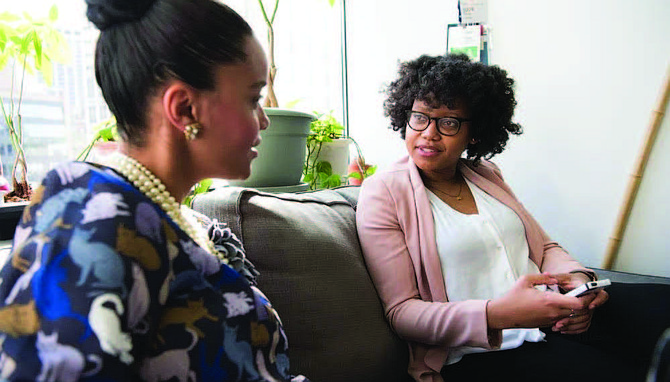Women More Likely to Face Housing Insecurity in Pandemic-Led Recession
A new Zillow analysis finds that year-over-year unemployment claims are 10 times higher for women during this pandemic than what men experienced in the Great Recession.
A new Zillow analysis finds women are more likely than men to be unemployed, renters and caregivers during the coronavirus pandemic, thereby increasing their risk of becoming severely cost-burdened by housing.
The pandemic has been a startling setback for women who had been narrowing the gender gap in recent years.
At the beginning of the year, more women than ever before were in the workforce, incomes were rising along with the home values of women-headed households.
The COVID-19 pandemic has not only interrupted this period of growth, but may have pushed women backward in housing and employment by impacting their participation in the workforce and their potential earnings well into the future.
The Female Face of Unemployment
“She-cession” was a term coined to describe the disparate impacts this pandemic’s recession is having on women after the 2008 financial crisis was dubbed the “mancession” for the ways in which men were more severely impacted by Wall Street’s collapse.
Women are more likely to work in service-sector industries, which are the most affected by the pandemic, and are feeling the effects of unemployment much more severely.
In May, unemployment claims for women were up 1,368 percent year over year. At the peak of the Great Recession in 2009, unemployment claims for men were up 137 percent year over year. At the peak of the COVID-19-driven recession in May, unemployment claims for men were up 983 percent year over year, a record high, but still significantly less than the spike women experienced. Black and Latinx women are faring even worse, with persistent double-digit unemployment rates as reported by the U.S. Bureau of Labor Statistics.
• “She-cession” is a term reportedly coined by labor economist Armine Yalnizyan. Four times as many women as men left the workforce in September alone. That adds up to nearly 865,000 women or 80 percent of all workers who dropped out of the labor force last month.
Unemployment and under- employment have put a strain on the ability of women-led households to afford housing. A Zillow survey from the Harris Poll found that women were more likely to say they would not be able to make the current month’s housing payment – rent or mortgage – if their household lost a primary source of income.
“Direct rental assistance and extending unemployment assistance could help women cover housing payment obligations and keep women afloat and in their homes for the time being,” said Zillow Senior Economist Cheryl Young. “However, these are short-term fixes. Longer term solutions like creating more affordable housing stock, economic policies that assist working parents, and increased voucher availability, are vital to ensuring that housing burdens don’t fall disproportionately on women.”
Renters at Risk
Previous Zillow research illustrates how renters have been hit hardest in this recession, and female householders overall are more likely to be renters; 37 percent of female householders are renters, compared to 31 percent for men.
According to Zillow’s analysis of the U.S. Census Bureau’s American Community Survey data, 45 percent of female renter households are cost-burdened, spending more than 30 percent of their income on housing, compared to 36 percent of male renter households.
Nearly a quarter (24%) of female renter households are severely cost-burdened, meaning they spend more than half their income on housing, compared to 17 percent of male renter households.
Women of color are even more likely to be cost-burdened by housing. More than half (51%) of Latinx female renter households and 49 percent of Black female renter households are cost-burdened. More than a quarter (27%) of both Hispanic and Black female renter households are severely cost-burdened. Any loss of income, even temporarily, puts cost-burdened renter households at risk of housing instability.
Child Care Crisis
Mothers of school-age children are reportedly taking longer to regain their employment, as many child care centers remain closed and schools turn to virtual or hybrid learning models. A Zillow analysis of the U.S. Census Bureau’s Household Pulse survey shows working mothers were three times more likely than working fathers to cite child care as the main reason they were out of work (22.1% of mothers, 7.7% of fathers).
Beyond the social and cultural pressures on women to be the primary caretakers in their households, there are significantly more female-headed households led by single parents. Female-headed renter households are more than twice as likely as male-headed renter households to be single parents — 70 percent of mothers who are household heads are single parents, compared to only 32 percent of fathers.
• This survey was conducted online within the United States by The Harris Poll on behalf of Zillow from May 4-6, 2020 among 2,065 U.S. adults ages 18 and older. This online survey is not based on a probability sample and therefore no estimate of theoretical sampling error can be calculated.
• The U.S. Census Bureau’s Household Pulse survey covers 12 weeks of the pandemic from April 23rd through July 21. Reports suggest the double hit of being more likely to work in industries affected by layoffs, and being the main caretaker of children will affect women’s labor force participation and earnings trajectories for decades to come.
An Uncertain Outlook
Prior to the current coronavirus outbreak, women-led households were on an upward trajectory. Home values of female-headed households have been creeping closer to home values overall. The ratio of women’s home values to home values overall is 95.9 percent as of August 2020, up from 91.9 percent a decade ago, signifying there is progress being made.
In labor, women were making up a larger share of the workforce and seeing incomes rise, possibly contributing to the increase in home values. This new analysis from Zillow finds that without interventions, these slow and steady improvements toward housing equality may be jeopardized by this unequal recession.
Latest Stories
- Happy New You!
- Is It Normal Aging or Early Dementia? Memory Loss Causes and Alzheimer’s Warning Signs to Watch For
- Chicago Sinfonietta To Host ‘Open Heart’ Concert
- State Of The Southland: Village of Matteson
- Local Woman Looks To Change Narrative Around Having Locs
Latest Podcast
Wendy Thompson-Friend Health

